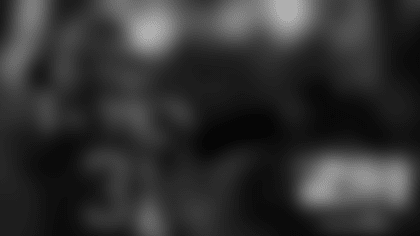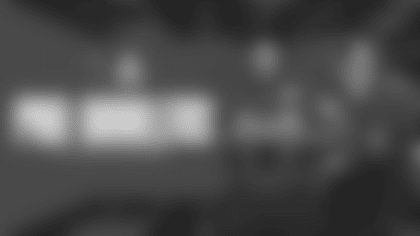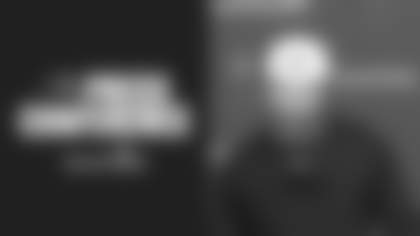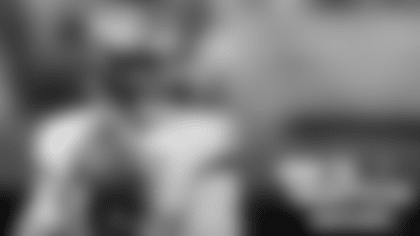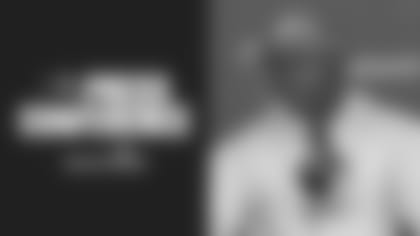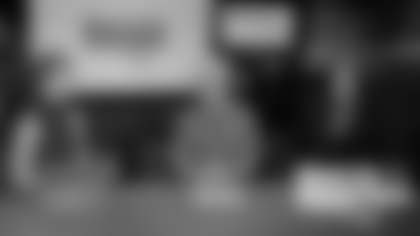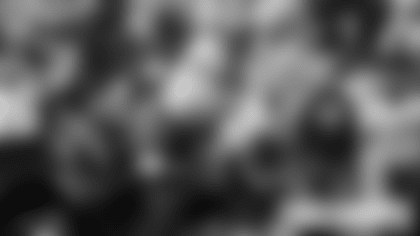- The Bucs' third-down defense in New Orleans wasn't as bad as it might seem, but it wasn't good enough
- DT Gerald McCoy says better run defense on first and second down would make a big difference
- Defensive Coordinator Leslie Frazier pointed to inconsistent spacing in the team's zone defense
The New Orleans Saints converted six of 13 third-down tries against the Tampa Bay Buccaneers' defense on Sunday. That's a success rate of 46.2% for Drew Brees and the Saints, which certainly doesn't look very good on paper for the Buccaneers. But just how bad was it? It depends upon what standard you are applying.
On one hand, Brees and the Saints came into the game converting on an NFL-high – and fairly ridiculous – 57.1% of their third downs. That's probably not sustainable for an entire season, but if it was it would represent the third-highest mark ever for an NFL team. Then again, the record was set by Brees and the Saints at 56.7% in 2011, so you never know. The point is, compared to what the Saints have done to other teams this year and in other seasons, especially in the Superdome, it wasn't a dramatically bad performance by the Buccaneers.
On the other hand, that game's worth of third-down results only dropped the Bucs' season-long number to 48.4% on defense, which is fifth-worst in the NFL. In that regard, given that it is more of a Tampa Bay trend than a Brees-led anomaly, 46.2% doesn't look so hot.
Can we get a third hand? Because here's another way to look at it: The 32 teams in the NFL, combined, have converted on 42.1% of their third downs through five weeks, which is a stunningly high number and an indication of how rule changes continue to favor the offense. If maintained, that number would be a new league-wide record, besting the 41.5% all the teams combined for way back in 1980. The NFL has finished with a composite third-down rate north of 40% only six times, and not since 1995. So, given that the Bucs' mark in New Orleans was just a little over that, we're back to thinking it was close to an acceptable performance. The Bucs also had one successful third-down stand in overtime erased by a penalty away from the ball, so they were perhaps a tiny bit better than that number indicates. (The Saints' defense had two third-down stops erased by penalty, so that was definitely not a claim of unfairness.)
So what's the final verdict? According to Gerald McCoy: Not good enough.
Despite the changes to the game, the McCoy and his fellow Buccaneer defenders still believe they should be able to put up third-down numbers reminiscent of great Tampa Bay defenses of the past. From 1996-2005, Tampa Bay never allowed a season-long third-down conversion rate worse than 36.1%, and in the majority of those years the number was below 35%. The 32 teams playing in this season are all over the board, going as high as Oakland's 50.0% but also as low as Buffalo's 31.8%. Eight teams come in at 35.0% or lower; it can be done, and that's the target at which McCoy says the Buccaneers are aiming.
"Mid-30s or in the 30s," said McCoy, asked on Thursday to name a realistic goal. "We're at 48 percent? So that's half of the third downs – we have to win that. So seven-out-of-10 third downs, we have to win seven of those. It's where we have to be. It's not where we want to be, it's where we have to be to win games."
If they have to be there, then they have to find a way, and McCoy actually can think of several specific improvements that would change that third-down number in a hurry. For one, the defense can't seem to string together enough plays in which both the pass-rush and the coverage are playing as well as they should be.

DT Gerald McCoy wants to see the Bucs' pass rush and coverage work together more consistently on third downs
"[The] rush and coverage combo is not working together right now," he said. "Sometimes you have a great rush and no coverage and sometimes you have great coverage and no rush. It has to work together consistently. There have been times where it has been working together, but it hasn't been consistent enough and we have to get that. One thing that has to be consistent even if in the back end is not always there is the rush. We have to rush better as a unit, we can't just have one guy winning or two guys winning, everybody has to be in place in order to get off the field on third down."
There's more, and if it's not exactly groundbreaking stuff that's probably a good thing. Tackling and discipline are two things a team should be able to improve upon regardless of personnel or scheme.
"We have to be better at definitely tackling," said McCoy. "Defensive penalties have to stop, we have to keep them at a minimum, but really just getting back to the basics. Knowing our base assignments and playing that perfect before we can try and do anything else."
Late in regulation of last Sunday's game, the Saints got just past midfield but faced a third-and-10. With 24 seconds to play, they could have tried to complete a pass just far enough to extend the drive, then maybe get off one more completion to set up a winning field goal try. Instead, Brees threw deep down the right seam to wide receiver Robert Meachem and cornerback Alterraun Verner, in man coverage, intercepted the pass.
Run that play 10 more times and Brees and Meachem probably hook up successfully here and there. Man coverage creates one-on-one battles that each team is going to win on occasion. On the other hand, the Bucs are often in a two-deep zone on long third downs, and it is in those situations that they have to execute the defensive scheme better.
"Yeah we've got to do a better job in our zone coverages when we do play zone coverage, whether it be a rush or whether it be guys getting in their spots in zone coverage," said Defensive Coordinator Leslie Frazier. "We've got to improve our third-down defense to limit those number of plays. Third down definitely has to be something we have to improve on if we want to improve as a defense."
One more set of numbers to note: Of the Saints' 13 third-down tries, eight were from a distance of seven yards or farther. They converted three of those, and a success rate of 37.5% from that distance is too high. Still, that demonstrates that even when your third-and-long defense isn't great, it's still a much more favorable situation. The Saints converted on 60% of their tries from six yards or closer. As one would expect, the Buc defense's season-long numbers for third-down conversions gradually decline as the distances increase. Opponents have converted on 61.5% of tries from three yards or closer, 52.9% from 4-6 yards, 47.6% from 7-10 yards and 30.8% from 11 yards or more. None of those numbers are where the team wants to be, but if the corrections noted above are made than third-and-long will become an increasingly difficult situation for Buccaneer opponents.
And that means one thing: stopping the run. Good running plays on first and second down allow offenses to create short third downs and keep drives moving. It should come as no surprise that the Buccaneers' best game this season, in Pittsburgh, included a run defense that held a strong Steeler ground attack to 85 yards. Now the Ravens come to town with a rushing attack averaging 4.7 yards per tote, and McCoy knows that is where the challenge begins.
"We need to get off the field on third downs and it starts with the run," he said. "We want to get them in third-and-long situations, eliminating pre-play penalties, offsides and those types of things that any offense can get a good drive going if they're starting first-and-five. If we can't stop the run, the offense is in third-and-twos and third-and-threes, the percentages are – offense usually wins that, so we have to get them in third-and-longs and it's going to start with stopping the run, which they do very well. They can run the ball. We're going to have to be gap sound and be on it this week."




